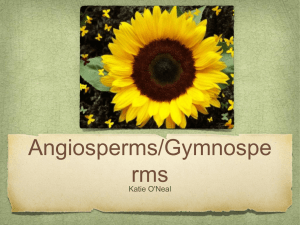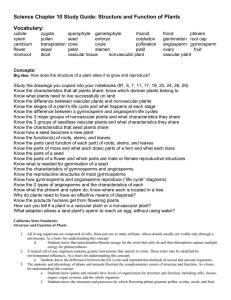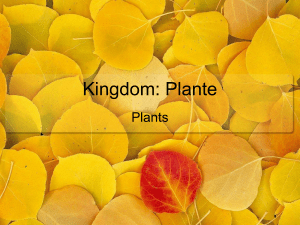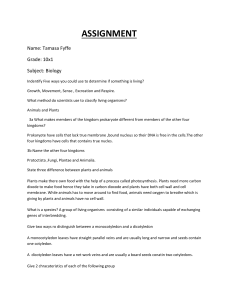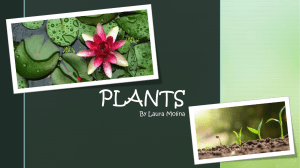Chlorophytes
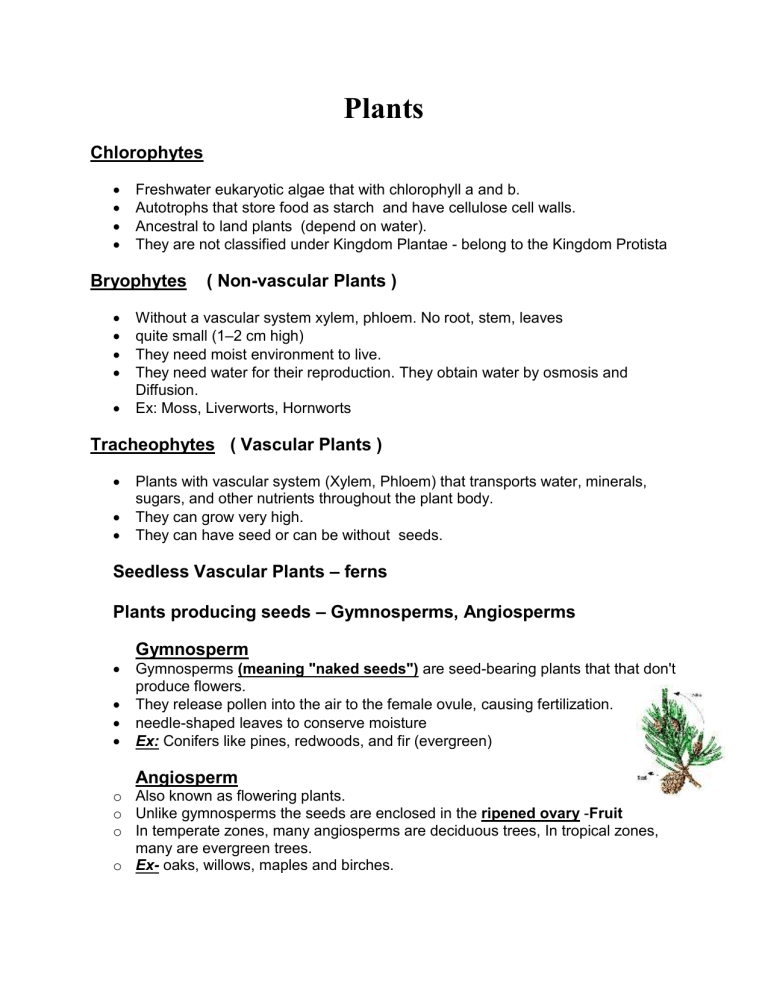
Plants
Chlorophytes
Freshwater eukaryotic algae that with chlorophyll a and b.
Autotrophs that store food as starch and have cellulose cell walls.
Ancestral to land plants (depend on water).
They are not classified under Kingdom Plantae - belong to the Kingdom Protista
Bryophytes ( Non-vascular Plants )
Without a vascular system xylem, phloem. No root, stem, leaves
quite small (1 –2 cm high)
They need moist environment to live.
They need water for their reproduction. They obtain water by osmosis and
Diffusion.
Ex: Moss, Liverworts, Hornworts
Tracheophytes ( Vascular Plants )
Plants with vascular system (Xylem, Phloem) that transports water, minerals, sugars, and other nutrients throughout the plant body.
They can grow very high.
They can have seed or can be without seeds.
Seedless Vascular Plants – ferns
Plants producing seeds – Gymnosperms, Angiosperms
Gymnosperm
Gymnosperms (meaning "naked seeds") are seed-bearing plants that that don't produce flowers.
They release pollen into the air to the female ovule, causing fertilization.
needle-shaped leaves to conserve moisture
Ex: Conifers like pines, redwoods, and fir (evergreen)
Angiosperm o Also known as flowering plants. o Unlike gymnosperms the seeds are enclosed in the ripened ovary Fruit o In temperate zones, many angiosperms are deciduous trees, In tropical zones, many are evergreen trees. o Ex oaks, willows, maples and birches.
Types of Angiosperm – Dicotyledon, Monocotyledon
Dicotyledon
Characterized by the presence of only two seed leaves when they first sprout (di
= two, cotyledon = seed leaf).
Dicots usually have flower parts in fours and fives
Leaves are usually net-veined rather than having parallel veins.
Herbaceous and woody stems
Monocotyledon
Characterized by solitary seed leaves (mono = one, cotyledon = seed leaf)
Having flower parts in groups of three
Leaves with parallel veins.
Almost all are herbaceous plants
( die completely at the end of the growing season).
